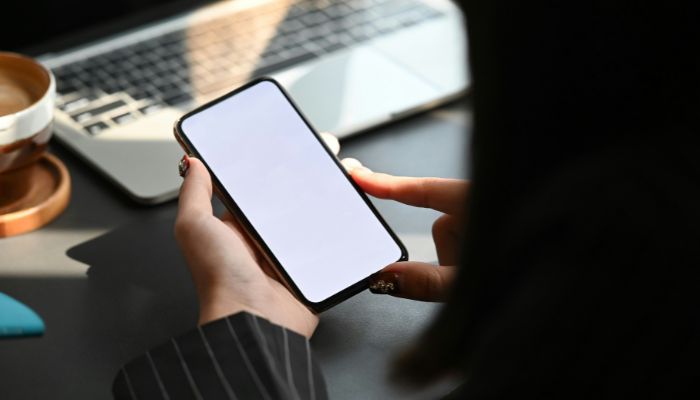
Yes, international phone numbers incorporate area codes in combination with country codes to accurately route calls across global regions. These codes allow callers to pinpoint specific cities or regions within a country. The dialing sequence typically begins with the international access code, followed by the country code, and then the area code before the local phone number.
Understanding the distinction between local and international codes is crucial for seamless communication. Efficient international dialing practices are not only essential for accurate communication but also play a role in preventing international spam calls, as proper formatting and dialing etiquette help avoid potential spam issues.
Understanding International Dialing System
Understanding the international dialing system is fundamental for anyone engaged in global communication. This system involves specific dialing conventions that ensure a call is correctly routed to its destination. Number formatting is critical; international numbers typically begin with a “+” sign, followed by the country code, and then the local number. This standardized format helps to avoid confusion and ensures accuracy in dialing.
Time zone considerations play a vital role in international calls. Knowing the time difference between the caller’s and receiver’s locations helps to schedule calls at convenient times for both parties, avoiding disruptions and ensuring effective communication.
Call charges are another important aspect of the international dialing system. Rates can vary significantly depending on the countries involved, the duration of the call, and the service provider. Awareness of these charges can help manage communication costs effectively.
Mobile networks add another layer of complexity to international dialing. Mobile numbers often have different prefixes and may incur different charges compared to landlines. Understanding these nuances ensures that international calls are made efficiently, cost-effectively, and at appropriate times. Thus, mastering the international dialing system is essential for seamless global communication.
Differences Between Local and International Codes

Navigating the differences between local and international codes is crucial for anyone involved in cross-border communication. Local codes, often referred to as area identifiers, are used within a country to designate specific regions or cities. These codes streamline the dialing process for domestic calls, allowing callers to reach their desired localities efficiently.
Local Codes (Area Identifiers):
- Used within a country to designate specific regions or cities.
- Simplify and streamline the dialing process for domestic calls.
- Ensure that calls are directed to the correct locality.
Conversely, international calls require the use of country codes, which are numerical prefixes assigned to each nation. Country codes are essential for routing calls across borders. When making an international call, the dialing process typically begins with an exit code, followed by the country code, and then the local code and phone number. This sequence ensures the call is directed to the correct country and specific area within that country.
International Codes (Country Codes):
- Numerical prefixes assigned to each nation for international dialing.
- Necessary for routing calls across borders.
- Dialing process includes an exit code, country code, local code, and phone number.
Understanding these distinctions is critical to avoiding misdialed numbers and ensuring effective communication. While local codes simplify internal navigation, country codes bridge the gap between domestic and international communication networks.
If you need to locate international phone number location, using the correct country code is essential to pinpointing the correct region.
Key Distinctions:
- Local codes streamline internal communication within a country.
- Country codes enable and direct cross-border communication.
The interplay between these codes forms the backbone of global telephony, making it possible for individuals and businesses to maintain seamless connections worldwide. Thus, mastering local and international dialing protocols is indispensable for efficient cross-border interactions.
Role of Country Codes in International Dialing
Country codes play a pivotal role in international dialing, acting as the initial routing mechanism that directs a call to the appropriate nation. The importance of country codes cannot be overstated; they are essential for distinguishing between the vast array of global telephone numbers. With the impact of globalization on dialing, having a standardized country code system ensures seamless communication across borders.
The benefits of international calling are immense, allowing businesses and individuals to connect without geographical limitations. Country codes facilitate these interactions by providing a clear and concise method to initiate calls abroad. As the evolution of dialing systems progresses, the integration of country codes has become even more critical, accommodating the ever-increasing volume of international calls.
Navigating international phone directories is simplified through the use of country codes, as they provide a straightforward way to identify and reach contacts worldwide. This system also aids in preventing misdials and ensuring that calls are directed to the intended destinations.
Decoding City or Area Codes Globally

City or area codes are essential elements in the global telecommunications framework, meticulously designed to pinpoint specific regions within countries. These codes, known as global city codes, facilitate seamless communication by distinguishing between various geographic areas, thus optimizing call routing efficiency.
Worldwide area identifiers play a pivotal role in the organization of international calling regions. Each identifier is unique to a particular city or locality, ensuring that calls reach their intended destinations without error.
For instance, Paris uses the area code ‘1’, while Tokyo uses ‘3’, signifying their distinct positions within their respective national and global dialing zones.
The precision of foreign phone districts is crucial for businesses, governments, and individuals who rely on accurate and reliable communication channels. By utilizing these codes, entities can connect across vast distances, enhancing international collaboration and exchange.
Additionally, these identifiers enable service providers to manage and allocate resources effectively, ensuring robust network performance.
In this intricate web of telecommunications, global dialing zones serve as the backbone for effective international communication. Understanding and correctly using these codes is fundamental for anyone engaging in cross-border interactions. Making the decoding of city or area codes a vital skill in today’s interconnected world.
Relationship Between Country and Area Codes
Understanding the intricate relationship between country and area codes is fundamental in the realm of global telecommunications. Country identification is achieved through unique numeric representations known as country codes, which precede the phone number and signify the country of origin. This system facilitates global communication by providing a standardized method to dial internationally.
Area codes, also numerical, function on a more localized level within countries, introducing regional distinctions that further refine the dialing protocol. For instance, within the United States, the country code is +1, and area codes such as 212 (New York City) or 310 (Los Angeles) delineate specific geographical regions. This layered approach ensures that each phone number is uniquely identifiable, aiding in accurate routing and connectivity.
The numeric representation of these codes is paramount in maintaining an organized and efficient global communication network. Dialing protocols require the combination of country and area codes to complete a call, underscoring their interdependence.
For example, to reach a number in London, one would dial the UK’s country code (+44), followed by the area code for London (20), and then the local number. This structured system epitomizes the synergy between country and area codes, ensuring seamless international communication.
Case Study: Dialing European Phone Numbers

Building on the relationship between country and area codes, it is instructive to examine how this system operates in practice, particularly within Europe. The European numbering plan incorporates a combination of country specific codes and regional area codes, which ensures efficient routing of calls.
For example, the United Kingdom uses the country code +44, followed by an area code such as 20 for London. Similarly, France uses +33, with 1 designating Paris.
Dialing conventions within Europe typically require the caller to first dial the international dialing prefix (usually 00 or +), followed by the relevant country code, and then the area code, before the local number. This structured approach simplifies navigation through the global phone directory, allowing seamless connections across borders.
International calling rates vary significantly based on the country specific codes and the geographic location of the call’s origin and destination. For instance, calling from the United States to Germany (+49) may have different rates compared to a call to Italy (+39).
Understanding the European numbering plan and adhering to dialing conventions are essential for anyone engaging in international communication. This system ensures that calls are accurately directed and efficiently managed across diverse regions.
Practical Tips for International Dialing
Navigating the complexities of international dialing can be daunting, but a few practical tips can make the process more manageable.
- First, familiarize yourself with international number formats to avoid area code confusion. Each country has its unique structure, and understanding these can save time and prevent errors.
- When dialing abroad, always use the correct international dialing prefix, followed by the country code, area code, and local number. For instance, when calling the UK from the US, dial 011 (the US exit code), 44 (the UK country code), and then the area code and local number.
- Dialing etiquette abroad is crucial. Be mindful of time zones and local customs. Avoid calling during local rest hours or holidays to ensure you maintain good communication practices.
- Consider using calling card options if you frequently make international calls. These cards offer lower rates and can be a cost-effective solution. Virtual phone services are another excellent option, providing flexibility and additional features such as call forwarding and voicemail.
Conclusion
The international dialing system necessitates the use of country codes and, in some cases, specific city or area codes to correctly route calls across borders. Understanding the relationship between these codes is crucial for effective international communication.
The case study of European phone numbers illustrates the complexities and variations in dialing procedures. Comprehensive knowledge of international and local codes enhances the efficiency and accuracy of global telecommunications.
FAQs: Do International Phone Numbers Have Area Codes?
1. Do all countries use area codes for international phone numbers?
No, not all countries use area codes in the same way. Some countries, like the United States and Canada, have area codes that are essential when dialing both locally and internationally. In contrast, other countries, such as small island nations, may not use area codes at all. Instead, they rely solely on their country code to direct the call. When dialing internationally, it’s crucial to know whether the destination number requires an area code.
2. How can I tell if I need to include an area code when dialing internationally?
You need to include an area code when dialing internationally if the number you’re calling is in a country that uses them, like the U.S. or Australia. The easiest way to find out is to ask the person you’re calling for the full number, including the area code. Alternatively, you can search online for the international dialing format of that specific country. Including the correct area code ensures that your call reaches the correct region within the country.
3. What happens if I forget to use an area code when dialing internationally?
If you forget to use an area code when it’s required, your call may not connect, or it could be routed to the wrong location. In some cases, the call might connect to a general number in the country, but it won’t reach the intended recipient. It’s essential to include the area code to avoid confusion and ensure your call is delivered correctly.
4. Can I omit the area code when dialing a mobile number internationally?
In many cases, you can omit the area code when dialing a mobile number internationally because mobile numbers often have their own specific prefixes that serve a similar function to area codes. However, this is not a universal rule. Some countries require the area code even for mobile numbers, so it’s always a good idea to double-check the correct dialing format before making your call.